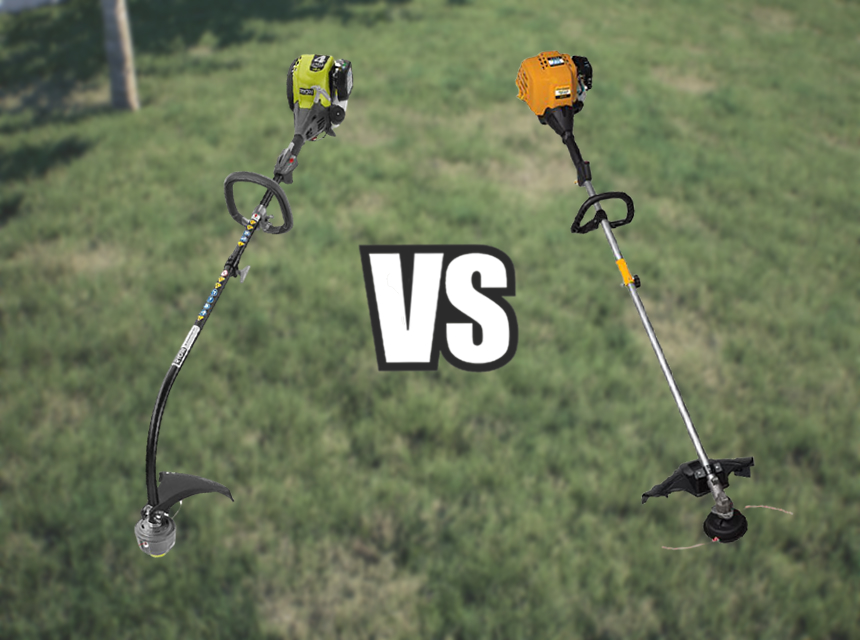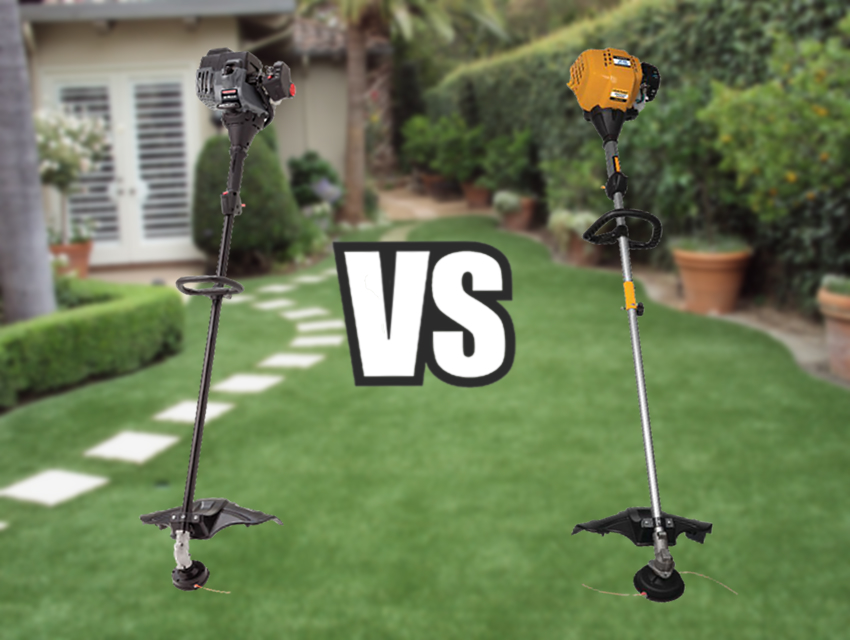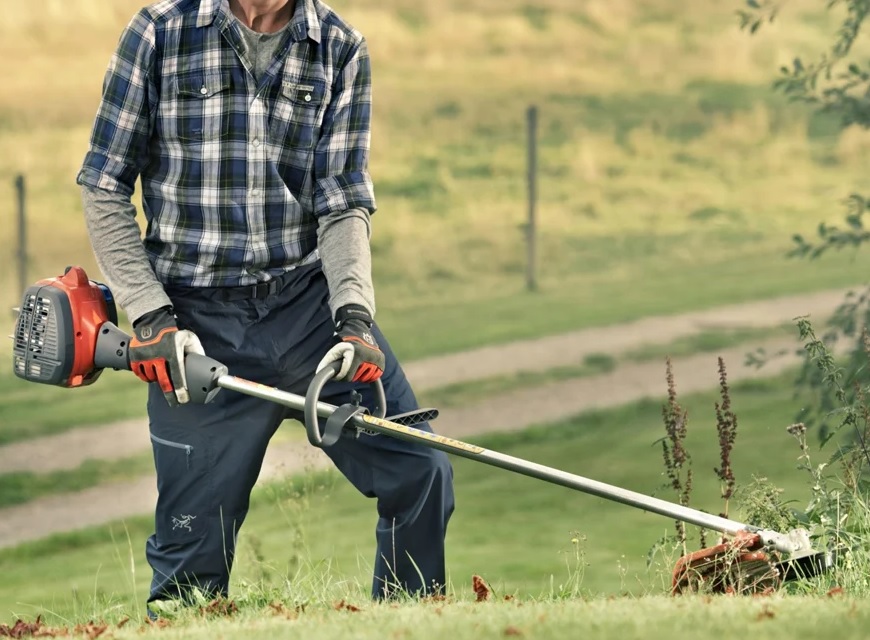
Most manufacturers and vendors will ship their weed eater machine options to buyers with the string already in place. This allows you to start using the tool as soon as it’s delivered to your doorstep. However, the string does get depleted over time, meaning that it will have to be replaced.
You can’t call in a professional to help you restring the device. After all, it takes less than five minutes, is easy to do, and requires no technical knowledge. Consequently, you’ll need to figure out how to string a weed wacker so you can get on with your grass trimming projects. The guide below tells you the dos and don’ts of stringing a string trimmer, so you don’t need to look for this information elsewhere.
Of course, you’ll have to contend with the fact that not all weed whackers are the same. Consequently, the weed eater string replacement process might differ depending on the model and type of device you own. We are going to start with the single-line weed wacker option and go from there.
For starters, you need to have a replacement trimmer line. However, before you log on to Amazon or go to your local hardware store and get a replacement string, you need to know what diameter string to buy. This information should be available in the line trimmer’s manual or even on the box that the device came in.
The 0.95-inch Husqvarna line remains a popular replacement option for string trimmer machines Trusted Source String trimmer - Wikipedia A string trimmer, also called a weed eater, weed whacker, weedwacker, weed whip, line trimmer, brush cutter, whipper snipper (in Australia, Canada, and South Africa) or strimmer (in the UK and Ireland), is a garden tool for cutting grass, small weeds, and groundcover. en.wikipedia.org since it has a higher cutting efficiency and tends to last longer than most of the other options. You can read about the best walk behind string trimmers in our review.
Once the string is in your home, you need to cut it to size. Again, the manual will tell you how much length you need. If you have more than one weed eater, be sure to read all the manuals as the right string length will vary from option to option. That said, the usual range is between 10’ to 25.’
Also, for some, it may not be immediately clear what length of line to use. In this case, you should cut the line as long as possible and trim it later on in the process. Additionally, make sure the line trimmer’s engine is off and that the gearbox is cool before going any further.
After that, remove the spool from the trimmer head. To do this, you’ll need to remove the retaining cap on the bottom side of the trimmer head. Notably, the process for removing the tab might include pressing a tab, unscrewing the cap, or both.
There should be a starter hole on the spool that you can jam one end of the line into. Once you’ve pushed about half an inch of line into this hole, then you can wrap the rest of the string around the spool. Some arrows on the spool will tell you which direction to wrap the line.
Ensure that you’re wrapping the string in neat, straight lines. This will help prevent line jamming down the road. Do this until the free string left is about 5” or 6”. Push the free string into the spool’s retainer to hold it in place.
After that, you can then return the spool to the trimmer head. Next, remove the string from the retainer and slide it into the slot on the trimmer head. Finish up by replacing the retaining cap, and you should be good to go.
According to most reviewers, the BLACK+DECKER LST136 is an excellent single-line weed wacker that features an automatic feed spool. Also, it’s incredibly convenient since users can get the AF-100 replacement spools that eliminate the need to restring the machine manually.
Finally, if you weren’t sure about the length and had to cut it after wrapping it around the spool, it’s important to note how much string you ended up using. This will save you from wasting string down the line.
The how-to, when stringing a double weed wacker, is not that different from replacing the pull string on a single-line weed wacker. In fact, the first few steps are almost identical. You turn off the engine and remove the retaining cap. There should be two spools under the cap.
Cut two pieces of string that match the requirements of the machine. They should be the same length. After that, locate the starter holes, push a bit of the line, and wrap it around the spool. Again, you still need to ensure the line is in neat, straight lines to prevent line jamming. Also, the string needs to follow the direction of the arrows given.
There should be two retainers to hold the 5” or 6” remaining pieces of string in place while you put the spools back in the trimmer head. Also, instead of slots, the double-line weed wacker has two eyelets on the sides of the trimmer head. Feed the two lines through one eyelet each and insert the spools into the trimmer head. Remember to replace the cap.
Finally, you can pull on the strings to check if the head is feeding smoothly. If it is, you’re done. If it isn’t, you probably got one step wrong and need to redo the process.
The how-to for stringing such a Ryobi weed wacker involves turning off the engine and cutting the line to size. As you might’ve noticed, these two steps are similar to the other two stringing methods as well. After that, locate the eyelets on the trimmer head and rotate the cap. The aim is to make sure the arrows align with these eyelets.
For confirmation, look through one eyelet and you should see through the eyelet on the opposite side of the trimmer head as well. Thread the prepared line through both these eyelets until the string left hanging is the same length on both sides.
After that, twist the head a few times as this will pull the string into the head. Most machines have an arrow telling you which direction to rotate the head. Do this until you have about 5” or 6” of string left on both sides, and you should be done.
In terms of stringing, the Ryobi RY40250 is one of the most preferred by users since the trimmer head has a mechanism to help reel in the line.
As you can see, the guide above tells you how to string a weed wacker, so you don’t have to guess. If you can follow the steps mentioned, you should have no problems with the process, and you won’t have to spend more than a few minutes restringing your machine. After that, it’s back to ensuring your lawn looks the best way possible.





